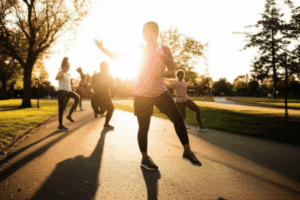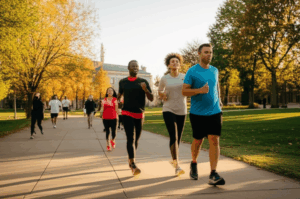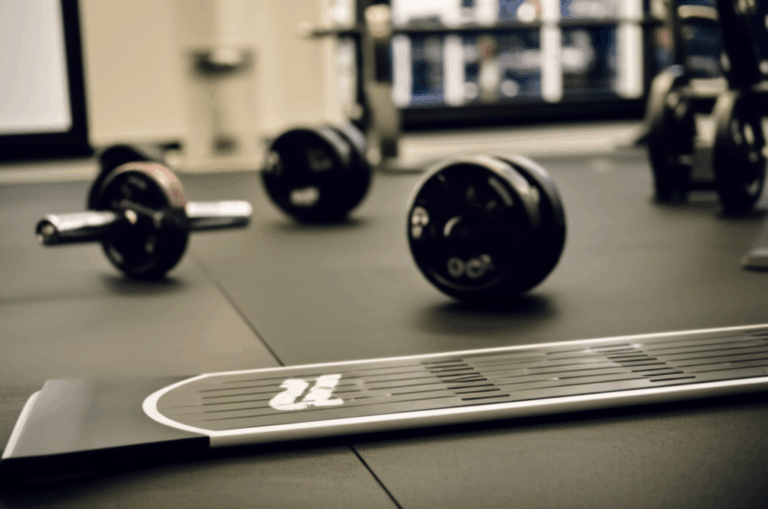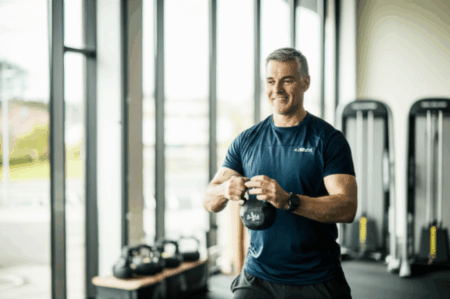The pursuit of fitness often leads to the gym, a place brimming with sweat, exertion, and shared equipment. While the health benefits of exercise are undeniable, experts warn that these vibrant hubs of activity can also be breeding grounds for various infections, putting unwitting gym-goers at risk. Surfaces frequently touched, from exercise balls to cardio machine handles, may harbor more germs than even a public toilet seat, according to public health professionals.
Understanding the hidden dangers and adopting proactive hygiene measures is crucial for maintaining your health while achieving your fitness goals. This guide will explore common gym-related infections, identify the notorious germ hotspots, and provide actionable advice from experts on how to safeguard yourself.

Common Infections Lurking in the Gym
Gym environments, characterized by warmth, moisture, and frequent skin-to-surface contact, create an ideal ecosystem for bacteria, viruses, and fungi to thrive. These microorganisms can lead to a range of infections, primarily affecting the skin and respiratory system.
Skin Infections: The Most Prevalent Threat
Skin infections are particularly common in gyms. Here are some of the most frequently encountered:
- Ringworm (Tinea Corporis): A fungal infection that causes an itchy, red, circular rash with a raised, scaly border. It can occur anywhere on the body and is easily spread through direct skin-to-skin contact or contact with contaminated surfaces.
- Athlete’s Foot (Tinea Pedis): This fungal infection commonly affects the feet, causing itching, scaling, and redness, often between the toes. It’s frequently contracted by walking barefoot in public locker rooms and showers.
- Jock Itch (Tinea Cruris): A fungal infection similar to athlete’s foot, jock itch manifests as an itchy rash in the groin and inner thigh areas. It thrives in warm, moist conditions and can be spread through direct contact or shared clothing/towels.
- Impetigo: A highly contagious bacterial skin infection that causes red sores that quickly rupture, ooze, and form a yellowish crust, often seen on the face.
- Folliculitis: This occurs when hair follicles become inflamed, often due to bacterial or fungal infection, leading to pus-filled bumps resembling pimples. These can be itchy and crusty.
- Boils, Furuncles, and Carbuncles: These are deep, painful pockets of pus that form under the skin, often caused by staph bacteria. They frequently appear in areas like the armpits, groin, or buttocks.
- MRSA (Methicillin-Resistant Staphylococcus Aureus): A type of staph infection that is resistant to many common antibiotics, making it more challenging to treat. MRSA often begins as a painful skin boil and can spread through skin-to-skin contact or infected objects. It’s particularly a concern in crowded environments like gyms, especially when there are cuts or scrapes.
Respiratory Infections: Airborne Risks
While skin infections are highly visible, respiratory illnesses can also circulate in gyms, primarily due to close contact, heavy breathing during exercise, and enclosed spaces. Viruses like the flu, common cold, and even more serious pathogens can spread when individuals cough or sneeze. Poor ventilation in some areas can exacerbate this risk.
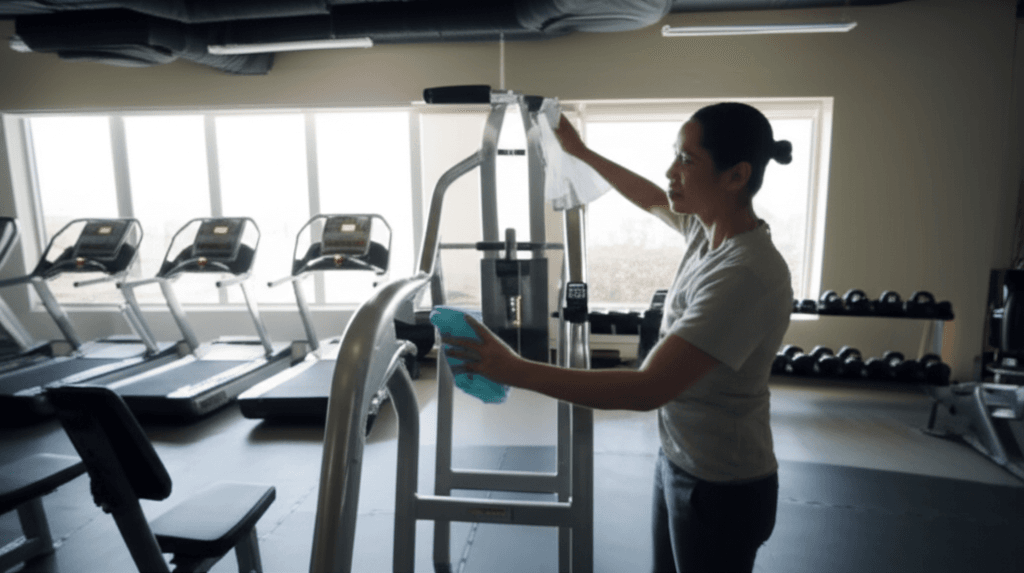
Identifying the Germ Hotspots in Your Gym
Germs flourish on surfaces based on factors like frequency of contact, moisture, pressure, and surface texture. Experts have pinpointed several areas and pieces of equipment that tend to be the germiest:
- Free Weights, Dumbbells, and Barbells: These are among the most frequently handled items and can be covered in bacteria and viruses.
- Cardio Machine Handles: Treadmills, ellipticals, and stationary bikes all have handles that are constantly gripped by sweaty hands.
- Exercise Balls: The textured surfaces of exercise balls make them difficult to clean thoroughly, allowing microbes to linger. Research has found over one-third of tested gym surfaces, especially exercise balls, to be positive for Staphylococcus aureus.
- Yoga Mats: Often used directly on the floor and in close contact with skin, shared yoga mats can be significant germ havens.
- Workout Benches and Seats: Any shared surface where skin comes into direct contact, particularly in a sweaty environment, is a potential hotspot.
- Locker Rooms and Showers: These warm, damp environments are ideal breeding grounds for fungi, bacteria, and viruses, making them high-risk areas for athlete’s foot, jock itch, and other skin infections.
- Hot Tubs, Saunas, and Steam Rooms: While relaxing, these areas can harbor germs, especially if you have open wounds.
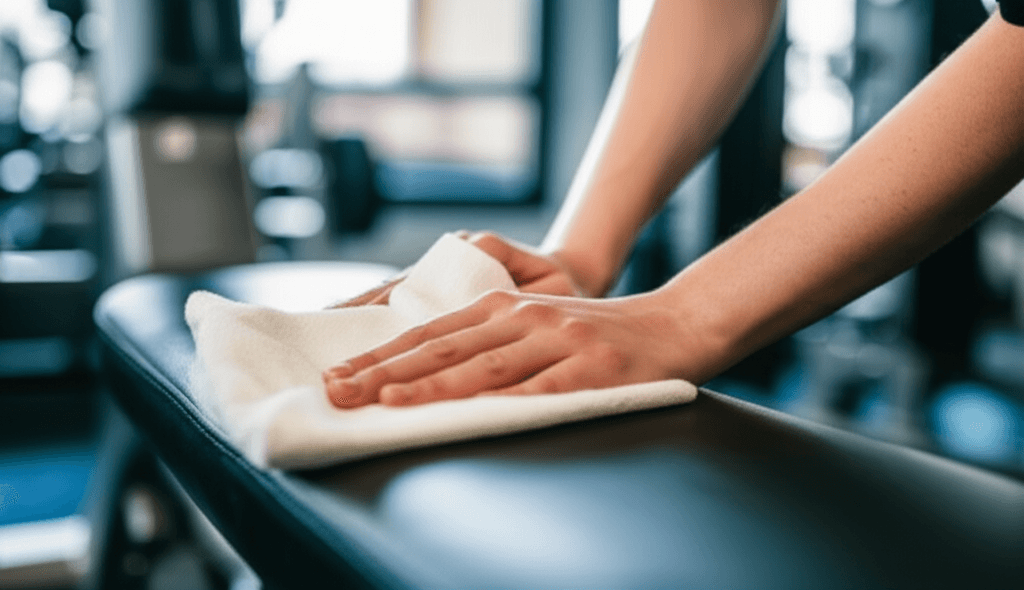
Expert Strategies for a Hygienic Workout
Protecting yourself from gym-related infections is largely dependent on consistent personal hygiene and mindful practices. Here’s how to stay safe, according to experts:
Pre- and Post-Workout Hygiene
- Disinfect Equipment: Always wipe down equipment before and after use with disinfectant wipes or spray provided by the gym. This practice protects both yourself and the next user. Ensure the surface remains wet long enough to effectively kill germs.
- Wash or Sanitize Hands: Wash your hands thoroughly with soap and water for at least 20 seconds, or use an alcohol-based hand sanitizer with at least 60% alcohol, immediately after your workout. Avoid touching your face during your workout to prevent transferring pathogens from your hands to your face.
- Shower Promptly: Shower as soon as possible after working out. This helps wash away sweat and any microbes that may have accumulated on your skin.
- Wear Fresh Clothes: Always put on freshly laundered, loose-fitting, moisture-wicking clothes for your workout to help keep your skin dry and prevent germ growth. Wash your gym clothes after every wearing. Don’t put your sweaty gym clothes back on after showering; change into fresh attire.
Protecting Your Skin and Feet
- Cover Cuts and Abrasions: Keep any cuts, scrapes, or open wounds clean and covered with a clean, dry bandage. This prevents bacteria from entering your body and reduces the risk of spreading infections. Avoid saunas, steam rooms, and hot tubs until wounds are healed.
- Wear Shoes in Public Areas: Never walk barefoot in public gym areas, especially around pools, in locker rooms, and showers. Always wear shower shoes, flip-flops, or sandals to prevent fungal infections like athlete’s foot.
- Use Personal Barriers: Consider placing a clean towel between your skin and shared surfaces like workout benches or bicycle seats. Bringing your own yoga mat and gloves can also limit exposure to contaminated surfaces.
Smart Gym Practices
- Bring Your Own Essentials: Carry your own water bottle and towels. Avoid sharing personal items like towels, razors, or athletic equipment.
- Choose Wisely: If possible, work out during off-peak hours or in less crowded, well-ventilated areas to minimize exposure to airborne germs.
- Stay Home When Sick: If you’re not feeling well, stay home from the gym to prevent spreading illnesses to others.
- Foot Care: Maintain good foot hygiene and change your socks regularly. If you are prone to athlete’s foot, using antifungal powder in your shoes daily can help prevent infections.
- Be Mindful of Your Gym’s Cleanliness: Look for gyms that provide adequate cleaning supplies and visibly encourage good hygiene practices. Some gyms also implement measures like appropriate distancing between equipment and reduced hours for thorough cleaning.
While gyms offer immense benefits for physical and mental health, they are not sterile environments. By adopting these simple, consistent hygiene habits, you can significantly reduce your risk of infection and ensure your fitness journey remains safe and healthy.

